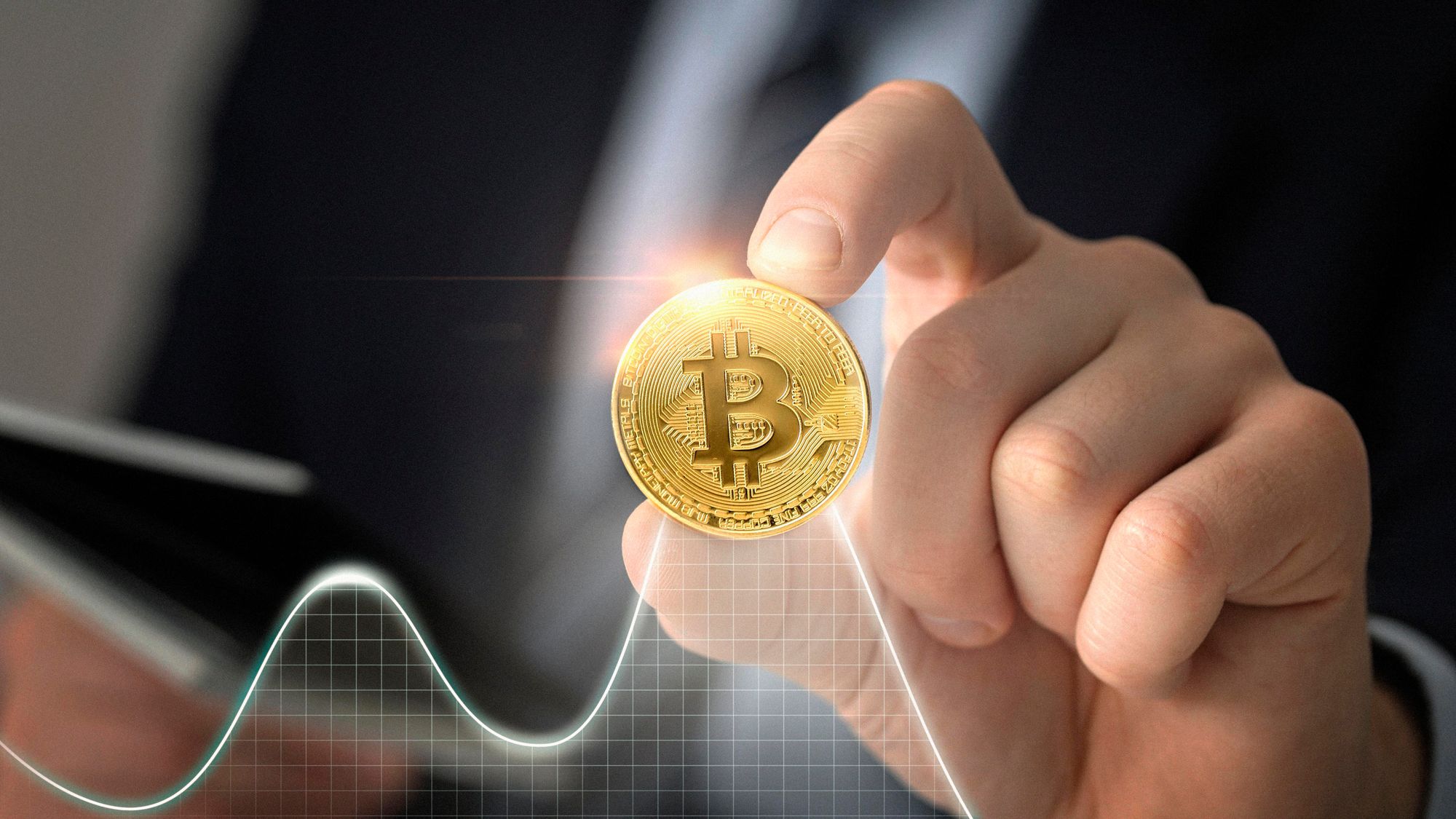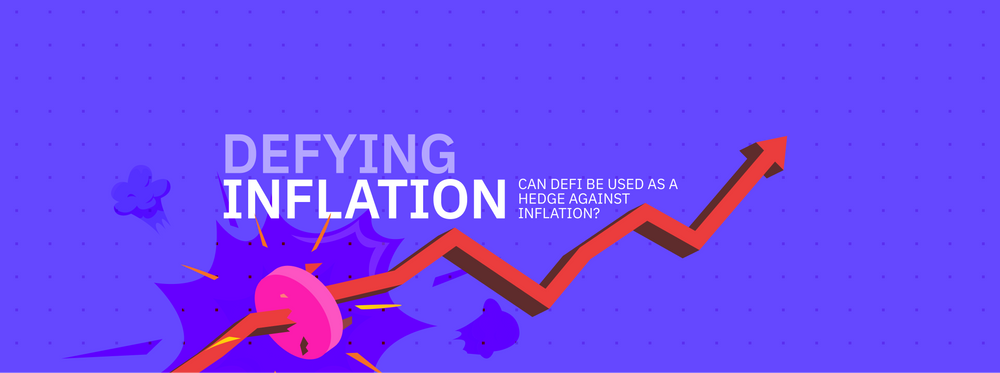DEFYING INFLATION: Can DeFi be Used as a Hedge Against Inflation?
With global inflation on the rise, more investors are turning to decentralized finance (DeFi) with the assumption that it can be utilized as a hedge against the impacts of rising prices or the devaluation of currency.
The question is, are they right to assume so?
In this article, we explore the reasons why DeFi is touted by many as a tool for creating a hedge against inflation, as well as the possibilities or opportunities that it helps create for investors during such periods.
KEY TAKEAWAYS:
- Inflation not only reduces your purchasing power but it can also affect future returns on your investments
- Cryptos are, generally, considered inflation-resistant since they have a supply cap and are decentralized
- Through Cake DeFi, you can easily apply various strategies against inflation while taking advantage of all the benefits that DeFi has to offer
What is inflation? A simple explanation
Nowadays, it’s increasingly becoming more common to see daily news on how inflation is affecting not only individual lives, but businesses and nations or economies as well.
But, what is it? And how does it really affect everyone?
Traditionally, inflation is defined as the general increase in the prices of goods and services in an economy. Some argue, however, that it is more suitable to define inflation as “the decline of purchasing power of a given currency over time.”
In any case, the point is this: inflation reduces one's purchasing power. And since it can also affect future returns on your investments, inflation can cause psychological or emotional stress on investors and stifle their ability to make good investment decisions.
The link between cryptos and inflation
Before we get into why DeFi is touted as a hedge against inflation, let’s first touch on the link between cryptocurrencies and inflation, and why they are generally considered as inflation-resistant assets - particularly bitcoin (BTC).
Though there are many causes of inflation, many agree that increasing money supply (i.e., printing an excessive amount of fiat money) causes inflationary pressure.
How? The logic is simple: if money supply grows faster than the overall economic growth, inflation will occur. Why? Because there is more fiat money now than the goods or services available that you can acquire with it.
As a result, the value of fiat money decreases and the prices of goods and services go up.
Arguably, cryptocurrencies have solved this problem since they have a supply cap. BTC, for example, has a hard cap of 21 million - which means that it has a finite supply. Once that number is reached, no BTC will be produced or mined again.
The decentralized nature of most cryptocurrencies also come into play in that, unlike fiat money, there is no central authority that can just “flip a switch” and produce more units if they want to. The issuance of BTC, for example, is determined by code - not by market events or central banks wanting to address those market events by printing more fiat money.
This is made possible, of course, through the use of blockchain - a type of decentralized ledger technology.

DeFi as a hedge against inflation
DeFi goes by the same approach or principle. In many ways, however, it has taken “hedging against inflation through the use of crypto” to the next level. How? Let’s start with the basics.
DeFi Services and Products Are Generally Decentralized
As the name implies, DeFi services and products are decentralized. As explained earlier, this means that no central authority is in control of these services and products, and they cannot be tampered with since they generally reside on a blockchain.
Cake DeFi, for example, does not control or have authority over the DeFi services provided on its platform. Since we follow the principal-agent model, we simply aggregate these services and act as a middleman whose sole purpose is to provide our users easy access to these same services.
We cannot manipulate or inflate the indicated yields or prices.
It is also worth mentioning that Cake DeFi users are in full control of their funds. There are no fixed terms, minimum deposits or hidden fees (e.g., maintenance fees). Most importantly, we keep user funds separate from the company’s funds - which further proves that you have total ownership of your funds.
To know more about this, you may click here.
DeFi Services and Products Are Easily Accessible
One of the reasons why traditional finance (TradFi) has failed in providing investors options for hedging against inflation is their inability to make such options easily accessible in the first place.
With DeFi, this is no longer an issue.
To access some of the best DeFi services and products available in the market, one simply needs to connect to the Internet, visit Cake DeFi’s official website, create an account and get verified. It’s really that simple!
DeFi Allows You to Convert Fiat Money Into a Stable Asset
As mentioned earlier, inflation causes fiat money to decrease its value or purchasing power. To address this, DeFi not only allows investors to convert fiat money into stablecoins (which is a relatively more stable asset) but generate yields at the same time.
Cake DeFi users, for example, can deposit either USD Coin (USDC) or Tether (USDT) and allocate them into our Lending service to generate cash flow.
Another option would be to use these stablecoins as collateral, together with DFI, and receive funds in the form of another crypto asset using our Borrow service.
DeFi Offers High Yields and Returns
Another reason why TradFi is, generally, not a good option when it comes to creating a hedge against inflation is that banks and other TradFi institutions offer low interest rates and returns.
In the US, the average bank interest rate for interest checking accounts is 0.03%. On the other hand, the average savings account rate is 0.06% while the average money market account interest rate is 0.09%.
Generally, DeFi offers much higher yields or returns. And, though, we don’t have any control over these yields or returns (as we explained earlier), you may click here to read a separate article that we have written about this matter.
DeFi Allows You To Apply Various Strategies Against Inflation
With Cake DeFi, you can easily utilize strategies such as diversification and dollar cost averaging to maintain a healthy portfolio amid inflation.
What is diversification? It is a risk management strategy which involves allocating funds into a variety of platforms, services and / or assets. Dollar cost averaging, on the other hand, means investing a fixed amount on a regular basis, regardless of changes in the market price or condition.
So how can you apply strategies using our services?
A simple example would be to dollar cost average a specific amount (e.g., $100) every week or every month, and diversify it into Lending, Staking, Liquidity Mining and Borrow (i.e., $25 each).
Do you want to use our services and create a hedge against inflation? Click here to sign up!
You will get US$30 worth of DFI when you register successfully and make a deposit of US$50 or more, and allocate the amount for at least 28 days into either our Lending, Staking Freezer or Liquidity Mining Freezer service.
So, what are you waiting for? Sign-up now before inflation catches up with your funds!
*certain jurisdictions may be ineligible for bonuses

